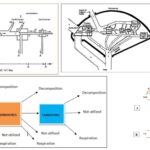Describe briefly the four major groups of Protozoa.
Describe briefly the four major groups of Protozoa.
Please login to submit an answer.
The four major groups of protozoa are as follows:
1. Amoeboid protozoans: These organisms move and feed by extending pseudopodia (false feet). They are found in freshwater, seawater, or moist soil and include species like Amoeba, which engulf prey by phagocytosis.
2. Flagellated protozoans: They possess one or more flagella for movement. Some, like Trypanosoma, are parasitic and cause diseases such as sleeping sickness, while others are free-living.
3. Ciliated protozoans: These are aquatic organisms that move using numerous cilia. They have a specialized gullet for ingestion, with examples like Paramoecium.
4. Sporozoans: These are non-motile protozoans with an infectious spore-like stage in their life cycle. They are often parasitic, with Plasmodium, which causes malaria, being a notable example.
- Share on Facebook
- Share on Twitter
- Share on LinkedIn
Helpful: 0%




